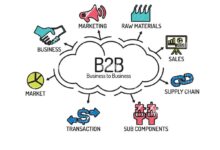B2B Business Secrets: 7 Proven Strategies to Dominate 2024
Ever wondered why some companies thrive while others barely survive? The secret often lies in mastering the art of B2B business—where relationships, strategy, and precision drive growth.
What Exactly Is a B2B Business?

The term B2B business, or business-to-business, refers to transactions between companies rather than between a company and individual consumers (B2C). This model powers industries from manufacturing to software, forming the backbone of global commerce.
Defining B2B vs. B2C
While B2C focuses on emotional appeal and quick sales, B2B is rooted in logic, long-term value, and complex decision-making processes. A B2B transaction often involves multiple stakeholders, longer sales cycles, and higher order values.
- B2B: Sales cycles can last months or even years.
- B2C: Purchases are often impulsive and immediate.
- B2B: Contracts, negotiations, and ROI analysis are standard.
“B2B is not just about selling products—it’s about solving business problems.” — Forbes
Common Examples of B2B Models
From cloud service providers like Amazon Web Services to industrial equipment suppliers, B2B spans countless sectors. Other examples include:
- Software as a Service (SaaS) platforms like Salesforce
- Raw material suppliers for manufacturers
- Marketing agencies serving corporate clients
These businesses don’t sell to end-users directly but enable other companies to operate more efficiently or profitably.
Why B2B Business Is More Important Than Ever
In today’s interconnected economy, the strength of B2B networks determines how resilient supply chains are, how fast innovation spreads, and how efficiently markets respond to change. The global B2B e-commerce market is projected to reach $20.9 trillion by 2027, far surpassing B2C in volume.
Scale and Economic Impact
B2B transactions account for over 80% of all global commerce. Unlike consumer trends that can shift rapidly, B2B deals are built on stability, long-term contracts, and strategic planning—making them critical during economic uncertainty.
- Supports entire supply chains from raw materials to distribution
- Drives innovation through partnerships and R&D collaborations
- Creates high-value jobs in engineering, logistics, and consulting
Resilience During Market Shifts
During the pandemic, many B2C businesses struggled, but agile B2B firms adapted quickly. For example, manufacturers pivoted to produce medical supplies, and SaaS companies scaled remote collaboration tools. This adaptability highlights the strategic depth of a well-run B2B business.
“The most resilient economies are those with strong B2B infrastructures.” — World Economic Forum
The 7 Core Models of B2B Business
Not all B2B businesses operate the same way. Understanding the different models helps entrepreneurs and marketers tailor their strategies effectively. Here are seven dominant types shaping the landscape today.
1. Manufacturers Selling to Wholesalers or Distributors
This traditional model involves companies producing goods and selling them in bulk to intermediaries. For example, a steel manufacturer sells to a distributor who then supplies construction firms.
- High-volume, low-margin transactions
- Relies on logistics and inventory management
- Long-term contracts ensure stability
This model remains vital in industries like automotive, textiles, and heavy machinery.
2. Wholesale to Retailer Model
In this setup, wholesalers purchase large quantities from manufacturers and resell to retailers. Think of beverage distributors supplying supermarkets.
- Acts as a bridge between production and retail
- Requires strong regional networks
- Profit depends on volume and distribution efficiency
While digital platforms are disrupting this model, it still dominates in emerging markets.
b2b business – B2b business menjadi aspek penting yang dibahas di sini.
3. SaaS and Subscription-Based Services
One of the fastest-growing B2B business models, SaaS companies like Zoom, Slack, and HubSpot offer software via subscription. Customers pay monthly or annually for access.
- Recurring revenue stream increases predictability
- Low marginal cost per user after initial development
- Requires continuous customer support and updates
According to Gartner, global SaaS spending will hit $272 billion in 2024, showing massive growth potential.
4. Service-Based B2B Firms
These include consulting agencies, digital marketing firms, legal services, and IT support providers. They sell expertise rather than physical products.
- Highly dependent on talent and reputation
- Projects are often customized per client
- Success measured by deliverables and KPIs
Firms like McKinsey or Deloitte exemplify this model, where value is tied directly to outcomes.
5. Platform Marketplaces
B2B marketplaces like Alibaba, ThomasNet, and Faire connect suppliers with buyers in a centralized digital space.
- Reduces friction in supplier discovery
- Enables small businesses to access global markets
- Revenue comes from commissions or listing fees
These platforms thrive on network effects—the more users join, the more valuable they become.
6. Direct-to-Business (D2B) Model
Emerging brands are bypassing intermediaries and selling directly to other businesses. For instance, a sustainable packaging startup might sell eco-friendly boxes directly to e-commerce brands.
- Higher profit margins due to no middlemen
- Greater control over branding and customer experience
- Requires robust sales and outreach capabilities
This model is gaining traction thanks to digital tools that simplify outreach and fulfillment.
7. Franchise and Licensing Agreements
Some B2B arrangements involve licensing intellectual property or franchising business models. Think of software licenses or franchise operations like FedEx Office.
- Scalable without direct operational burden
- Revenue from licensing fees or royalties
- Requires legal frameworks and quality control
It’s a powerful way to expand reach without massive capital investment.
Key Differences Between B2B and B2C Marketing
Marketing a B2B business isn’t just B2C with a different audience—it’s a fundamentally different game. The goals, messaging, and channels all shift dramatically.
Decision-Making Complexity
In B2B, purchases are rarely made by one person. A single sale might require approval from procurement, finance, IT, and senior management. This means marketing must address multiple pain points and roles within an organization.
- Create buyer personas for each stakeholder (e.g., decision-maker, influencer, end-user)
- Content must be data-driven and ROI-focused
- Long nurturing cycles require consistent engagement
“B2B buyers are 57% of the way through their decision process before they even contact a sales rep.” — SiriusDecisions
Content Strategy and Thought Leadership
While B2C relies on catchy slogans and emotional hooks, B2B thrives on credibility. Whitepapers, case studies, webinars, and industry reports establish authority.
b2b business – B2b business menjadi aspek penting yang dibahas di sini.
- Use data to back claims and demonstrate value
- Highlight success stories with real metrics
- Position your brand as a trusted advisor, not just a vendor
For example, a cybersecurity firm might publish a detailed report on emerging threats, positioning itself as an expert in the field.
Digital Channels and Lead Nurturing
B2B marketing leans heavily on LinkedIn, email campaigns, SEO, and account-based marketing (ABM). Unlike B2C, where social media ads drive instant sales, B2B uses digital channels to build relationships over time.
- LinkedIn is the top platform for B2B lead generation
- Email sequences nurture prospects through the funnel
- SEO targets high-intent keywords like “best CRM for small business”
Tools like HubSpot and Marketo automate much of this process, making it scalable.
Building a Successful B2B Business: 5 Essential Steps
Starting a B2B business isn’t just about having a great product—it’s about creating a system that attracts, converts, and retains high-value clients. Here’s how to do it right.
1. Identify a Clear Market Need
The best B2B businesses solve specific, painful problems. Instead of asking “What can I sell?”, ask “What keeps business leaders up at night?”
- Conduct surveys and interviews with potential clients
- Analyze industry pain points (e.g., inefficiency, rising costs)
- Validate demand before building a full product
For example, Zoom succeeded because it addressed the frustration of unreliable video conferencing.
2. Develop a Scalable Value Proposition
Your value proposition should clearly state how your product or service improves efficiency, reduces costs, or increases revenue for clients.
- Use the formula: “We help [target audience] achieve [benefit] by [solution]”
- Focus on outcomes, not features
- Test messaging with real prospects for feedback
A strong value proposition cuts through noise and accelerates decision-making.
3. Build a Professional Sales Funnel
Unlike B2C, B2B sales funnels are longer and require multiple touchpoints. A typical funnel includes:
- Awareness: Content marketing, SEO, social media
- Interest: Lead magnets like eBooks or free trials
- Decision: Demos, consultations, proposals
- Action: Contract signing and onboarding
Each stage needs tailored content and follow-up strategies.
4. Invest in Relationship Management
In B2B, trust is everything. Use CRM tools like Salesforce or Zoho to track interactions, personalize communication, and anticipate client needs.
- Assign account managers for key clients
- Schedule regular check-ins and reviews
- Offer proactive support and upsell opportunities
Long-term contracts and renewals depend on consistent relationship quality.
5. Measure and Optimize Performance
Track KPIs like customer acquisition cost (CAC), lifetime value (LTV), churn rate, and conversion rates.
b2b business – B2b business menjadi aspek penting yang dibahas di sini.
- Use dashboards to monitor sales pipeline health
- Conduct quarterly reviews to adjust strategy
- Leverage feedback to improve products and service
Data-driven decisions separate thriving B2B businesses from stagnant ones.
Top Challenges in B2B Business (And How to Overcome Them)
Even the most promising B2B business faces hurdles. Recognizing these challenges early gives you a strategic edge.
Long Sales Cycles
B2B purchases often take weeks or months to close. This ties up resources and creates cash flow pressure.
- Solution: Automate lead nurturing with email sequences
- Solution: Offer free trials or pilot programs to reduce risk
- Solution: Use consultative selling to build trust faster
Shortening the cycle without sacrificing quality is key.
Complex Buyer Committees
With multiple stakeholders involved, aligning everyone’s priorities can be difficult.
- Solution: Map out decision-makers and their concerns
- Solution: Provide tailored presentations for each role
- Solution: Use collaboration tools to keep communication transparent
Understanding organizational dynamics improves closing rates.
High Customer Expectations
B2B clients expect reliability, customization, and ongoing support. One failure can damage trust.
- Solution: Set clear service level agreements (SLAs)
- Solution: Offer dedicated support teams
- Solution: Continuously gather feedback and iterate
“In B2B, your reputation is your most valuable asset.” — Harvard Business Review
The Future of B2B Business: Trends to Watch in 2024 and Beyond
The B2B business landscape is evolving rapidly. Staying ahead means embracing innovation and anticipating shifts before they become mainstream.
AI and Automation in Sales
Artificial intelligence is transforming how B2B companies prospect, qualify leads, and personalize outreach.
- AI chatbots handle initial inquiries 24/7
- Predictive analytics identify high-potential accounts
- Automated email writing tools save hours of manual work
Platforms like Salesforce Einstein use AI to recommend next-best actions for sales reps.
Rise of Self-Service B2B Platforms
Just like consumers, B2B buyers want convenience. More companies are offering self-serve options for product demos, pricing, and onboarding.
- Reduces dependency on sales teams
- Speeds up time-to-value for customers
- Appeals to younger, tech-savvy decision-makers
Notion and Canva have successfully implemented this model for business users.
Sustainability as a Competitive Advantage
Corporate responsibility is no longer optional. B2B buyers increasingly favor suppliers with strong ESG (Environmental, Social, Governance) practices.
b2b business – B2b business menjadi aspek penting yang dibahas di sini.
- Highlight carbon footprint reductions
- Offer eco-friendly packaging or energy-efficient solutions
- Partner with green-certified vendors
According to a McKinsey report, 70% of B2B buyers consider sustainability when choosing suppliers.
Hyper-Personalization Through Data
Generic pitches don’t work anymore. Buyers expect messaging that reflects their industry, size, and challenges.
- Use intent data to detect buying signals
- Customize landing pages and offers by segment
- Leverage CRM insights for one-on-one outreach
Personalization boosts conversion rates and strengthens loyalty.
What is the main difference between B2B and B2C?
The main difference lies in the target audience and decision-making process. B2B involves selling to other businesses with longer sales cycles, multiple stakeholders, and a focus on ROI. B2C targets individual consumers with faster, emotion-driven purchases.
How do I start a B2B business?
Start by identifying a specific problem businesses face, validate the demand, create a compelling value proposition, build a professional sales and marketing strategy, and use CRM tools to manage relationships. Focus on solving real pain points with measurable outcomes.
What are the most profitable B2B industries?
Some of the most profitable B2B sectors include SaaS and cloud computing, healthcare technology, industrial automation, cybersecurity, and supply chain logistics. These industries offer high margins, recurring revenue, and strong growth potential.
How important is digital marketing for B2B?
Digital marketing is crucial for B2B success. It enables lead generation, brand authority building, and customer nurturing through channels like SEO, LinkedIn, email, and content marketing. Over 80% of B2B buyers start their journey online.
Can a small business succeed in B2B?
Absolutely. Small businesses can thrive in B2B by focusing on niche markets, offering personalized service, and leveraging digital tools to compete with larger players. Agility and expertise often give small firms an edge in building trusted partnerships.
b2b business – B2b business menjadi aspek penting yang dibahas di sini.
Mastering the B2B business landscape requires more than just a great product—it demands strategy, patience, and a deep understanding of business needs. From choosing the right model to navigating complex sales cycles, success comes from solving real problems with measurable impact. As technology evolves and buyer expectations rise, the companies that prioritize value, relationships, and innovation will lead the pack. Whether you’re launching a startup or scaling an existing firm, the principles outlined here provide a roadmap for sustainable growth in the dynamic world of B2B.
Further Reading:









